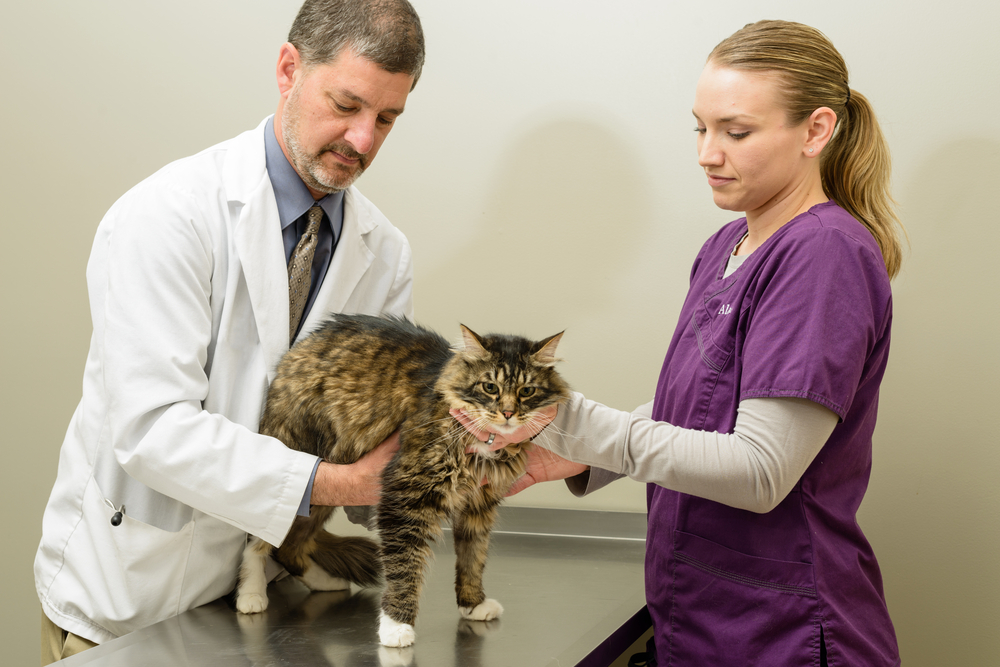Veterinary care’s many technological advancements offer your pet treatment and diagnostic options such as chemotherapy, radiation, MRI, and laser treatments, which are costly. Fortunately, if you enroll in a pet insurance plan, you will be reimbursed for many unexpected expenses related to illnesses and injuries, ensuring your pet receives high-quality care when they need it most. Our Willow Wood Animal Hospital team knows that deciphering pet insurance vocabulary can be a challenge, so we answer your common questions to help you determine which insurance plan is best for your pet and your finances.
Is pet insurance worth the monthly premium?
Pet insurance is a purchase you pay for and hope you never have to use. But when your pet is injured or becomes unexpectedly ill, and you have high veterinary bills, you will be thankful for the financial safety net that pet insurance provides. If your pet has an accident, you may have to pay hundreds or even thousands of dollars for their treatment. When you are enrolled in a pet insurance plan, however, you can focus on your pet’s care instead of the care’s cost. Regular monthly budgeting to pay your pet insurance premium is more cost-effective than paying for an unplanned veterinary expense.
Will insurance cover my pet’s needs?
While pet insurance does not cover care costs for every adverse health condition, plans are becoming much more inclusive and customizable, allowing you to choose the coverage amount your pet needs. Most pet insurance companies offer the following plan types:
- Accident-only coverage — As you may have guessed, this plan type covers only injuries or conditions considered accidental (e.g., broken bones, foreign-object ingestion). Emergency trauma care can be costly, and this option covers your pet’s care costs when the unexpected happens. Accident-only policies do not cover medication, vaccination, or routine examination costs.
- Illness and accident coverage — This plan type is more comprehensive, and usually covers diagnosis and treatment costs for conditions such as cancer, endocrine disorders, and some orthopedic injuries.
- Wellness coverage — Pet insurance companies offer wellness riders that you can add to most accident and illness plans. These riders may cover the costs of the following preventive health care services:
- Annual wellness exams
- Vaccinations
- Routine blood work
- Spay and neuter procedures
- Dental cleanings
- Flea, tick, and heartworm prevention and testing
Does my pet need insurance if they are young and healthy?
The best time to enroll in a pet insurance plan is when your pet is young and healthy. Most pet insurance plans do not cover pre-existing conditions, and by insuring your pet when they are young—before adverse health conditions develop—your plan will likely cover their future health conditions.
How do pet insurance plans reimburse you?
Most pet insurance companies process a claim within 10 business days. You can expedite the reimbursement process by submitting all necessary documentation when filing your claim. Most pet insurance companies have an online platform for uploading documents and filing claims. Typically, you are required to submit the following information when filing your claim:
- Veterinary records — If you are filing your pet’s first claim, you must submit all their veterinary records, their current diagnosis documentation, and a list of the veterinary procedures performed during the visit for which you are seeking reimbursement.
- Itemized invoice — Ensure the veterinary invoice you submit for reimbursement indicates all the charges and proof of payment.
- Banking details — Provide the pet insurance company with your current banking information to receive electronic reimbursement.
Either you or your insurance company pays your veterinary hospital for the health care services they provide. The two main payment methods are:
- Direct payment — Some pet insurance companies fully or partially pay your veterinarian directly. If your pet insurance company directly pays your veterinarian, you do not have to wait for reimbursement.
- Reimbursement — Other pet insurance companies require policyholders to pay their provider in full, and file a claim with the company for reimbursement. Once the pet insurance company receives and approves your claim forms, they transfer the coverage amount to you via direct deposit or check.
Does pet insurance cover pre-existing conditions?

A pre-existing condition is any health-related disorder that has been diagnosed before a pet’s health insurance coverage takes effect, and most pet insurance companies do not cover treatment costs for pre-existing conditions. Pet insurance companies may consider the following conditions as pre-existing:
- Chronic conditions — These are pre-existing conditions that can recur during your pet’s life, including breed-specific conditions (e.g., allergies, breathing problems).
- Bilateral conditions — A bilateral condition happens on both body sides, such as hip and elbow dysplasia, cruciate ligament issues, cataracts, and luxating patellas. For example, if your dog has cranial cruciate ligament (CCL) repair surgery on their right knee prior to becoming insured, a future left CCL rupture will not be covered, because the condition often occurs bilaterally.
- Intervertebral disc conditions — Degeneration or trauma often cause intervertebral disc conditions that affect the spinal cord.
Although most insurance plans do not cover chronic pre-existing conditions, a plan may cover some curable conditions after your pet has been symptom-free for a specific period. Before enrolling in a pet insurance plan, determine whether your pet has any pre-existing conditions, and clarify with your pet insurance company which pre-existing conditions they classify as curable or incurable.
No pet owner should have to choose between their finances and their pet’s veterinary care needs. If you are considering purchasing pet insurance, contact our Willow Wood Animal Hospital team to discuss how you can prepare for your pet’s unexpected health care expenses.







Leave A Comment